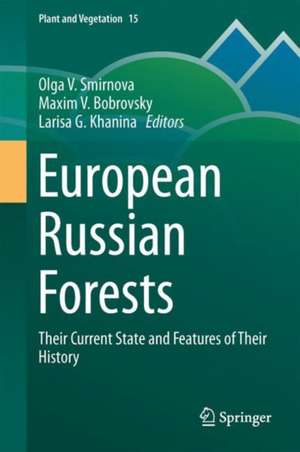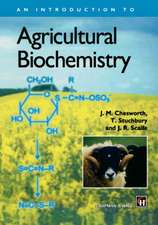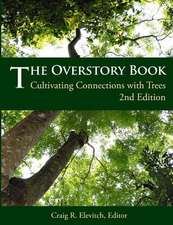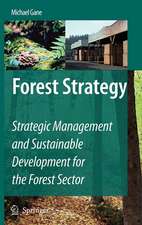European Russian Forests: Their Current State and Features of Their History: Plant and Vegetation, cartea 15
Editat de Olga V. Smirnova, Maxim V. Bobrovsky, Larisa G. Khaninaen Limba Engleză Hardback – 30 mai 2018
| Toate formatele și edițiile | Preț | Express |
|---|---|---|
| Paperback (1) | 1281.65 lei 38-44 zile | |
| SPRINGER NETHERLANDS – 14 dec 2018 | 1281.65 lei 38-44 zile | |
| Hardback (1) | 1329.20 lei 38-44 zile | |
| SPRINGER NETHERLANDS – 30 mai 2018 | 1329.20 lei 38-44 zile |
Din seria Plant and Vegetation
- 18%
 Preț: 1125.86 lei
Preț: 1125.86 lei - 24%
 Preț: 802.91 lei
Preț: 802.91 lei - 18%
 Preț: 953.52 lei
Preț: 953.52 lei - 15%
 Preț: 642.83 lei
Preț: 642.83 lei - 18%
 Preț: 954.45 lei
Preț: 954.45 lei - 24%
 Preț: 1487.35 lei
Preț: 1487.35 lei - 24%
 Preț: 962.66 lei
Preț: 962.66 lei - 18%
 Preț: 1405.09 lei
Preț: 1405.09 lei - 18%
 Preț: 1122.42 lei
Preț: 1122.42 lei - 24%
 Preț: 1049.67 lei
Preț: 1049.67 lei - 18%
 Preț: 1222.01 lei
Preț: 1222.01 lei - 18%
 Preț: 1219.16 lei
Preț: 1219.16 lei - 18%
 Preț: 1378.10 lei
Preț: 1378.10 lei - 18%
 Preț: 1230.35 lei
Preț: 1230.35 lei - 18%
 Preț: 1221.38 lei
Preț: 1221.38 lei - 18%
 Preț: 966.78 lei
Preț: 966.78 lei - 18%
 Preț: 959.19 lei
Preț: 959.19 lei
Preț: 1329.20 lei
Preț vechi: 1748.94 lei
-24% Nou
Puncte Express: 1994
Preț estimativ în valută:
254.34€ • 266.27$ • 210.45£
254.34€ • 266.27$ • 210.45£
Carte tipărită la comandă
Livrare economică 02-08 aprilie
Preluare comenzi: 021 569.72.76
Specificații
ISBN-13: 9789402411713
ISBN-10: 9402411712
Pagini: 651
Ilustrații: XIV, 564 p. 199 illus., 119 illus. in color.
Dimensiuni: 155 x 235 mm
Greutate: 1.11 kg
Ediția:1st ed. 2017
Editura: SPRINGER NETHERLANDS
Colecția Springer
Seria Plant and Vegetation
Locul publicării:Dordrecht, Netherlands
ISBN-10: 9402411712
Pagini: 651
Ilustrații: XIV, 564 p. 199 illus., 119 illus. in color.
Dimensiuni: 155 x 235 mm
Greutate: 1.11 kg
Ediția:1st ed. 2017
Editura: SPRINGER NETHERLANDS
Colecția Springer
Seria Plant and Vegetation
Locul publicării:Dordrecht, Netherlands
Cuprins
Preface.- Authors and Affiliations.- Part 1: Natural conditions and general descriptions of forest vegetation and forest soils.- Part 2: Methods.- Part 3: Boreal forests.- Part 4: Hemiboreal forests.- Part 5: Nemoral forests.- Part 6: Floodplains.- Part 7: Forest cover dynamics at the end of the 20th and the beginning of the 21st centuries.- Part 8: Development of the European Russian forests in the Holocene.
Textul de pe ultima copertă
The book describes the European Russian forests located in the Russian Plain and surrounding areas covering Eastern Karelia, the Kola Peninsula, the Northern, Central and Southern Russian provinces together with the Western Slope of the Ural Mountains. These forests comprise half of the total forested area in Europe and differ from the latter in their naturalness and the absence of intensive forest management in most of the area. The book describes the forests of the boreal, hemiboreal and nemoral forest regions; floodplain forests are also characterized according to their climatic regions. The book presents a classification and description of forest vegetation, soil characteristic and assessments of plant diversity and successional status of forest plant communities. Structure and composition of vegetation in early- and late-successional forests are analyzed with emphasis on forests in State Nature reserves. Features of the historical land-use, such as slash-and-burn, forest cutting,grazing, influence of fires on forest ecosystems, etc. are discussed for each forest region. The book is based on long-term investigations of the vegetation and soil, identifying and analysing forest tracts least disturbed by man, and on studying forest history at local and regional scales. Successional series of plant communities formed after typical anthropogenic impacts have been identified and a hypothesis on the potential forest landscapes and the main causes of their transformations is presented. The book contains an analysis of the general dynamics of the forest cover in European Russia during the last two decades based on satellite image processing. The history of forest landscapes in European Russia is briefly reviewed and it is shown that the main stages of transformation of the European Russian forests in the Holocene were related to the development of the production economy of people.
Caracteristici
A unique opportunity to learn in detail about the European Russian forests in English Special sections per climatic forest region on features of the historical land-use with unique photos Includes about 100 color photos of vegetation and soil in European Russian forests with mosaics of gaps, fallen trees, pits and mounds caused by treefalls with uprooting










